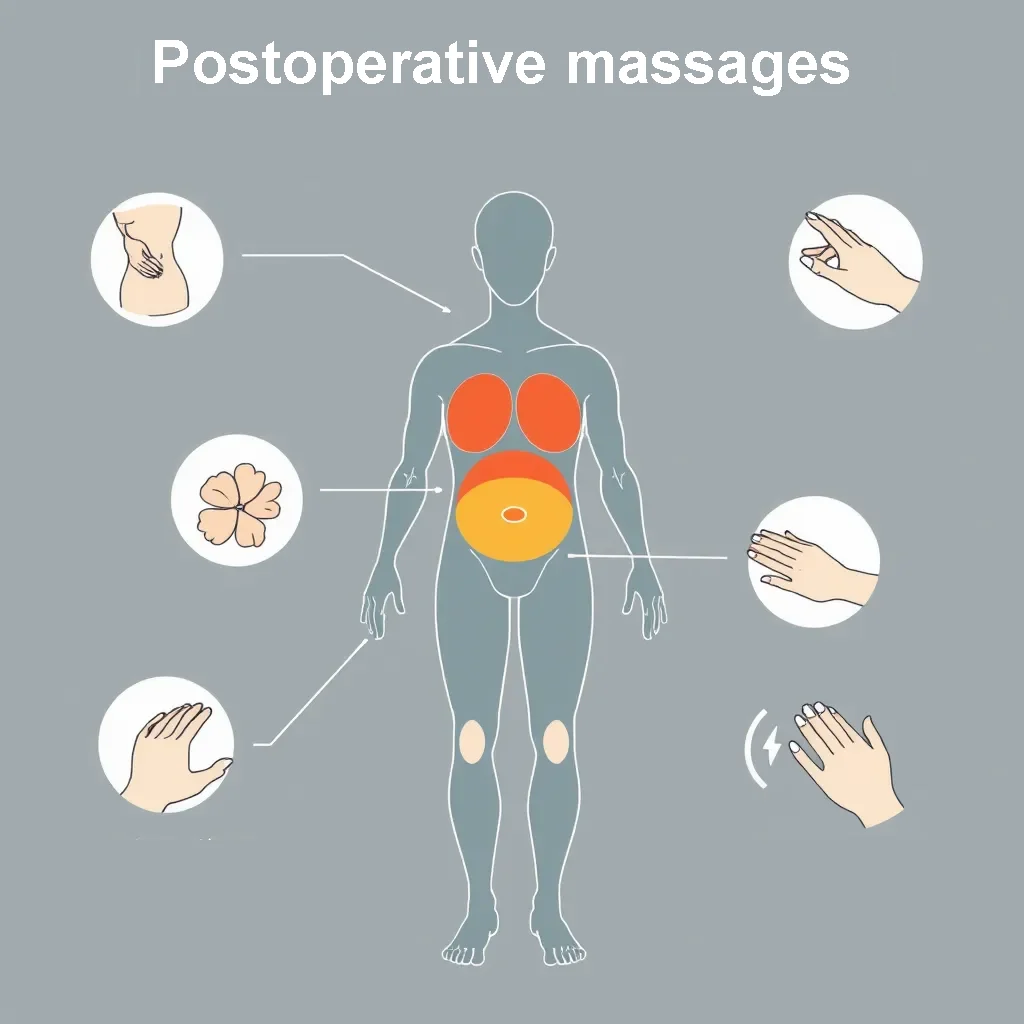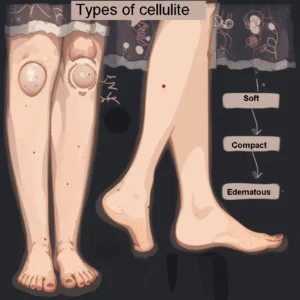

Postoperative massages: everything you need to know
Postoperative massages: everything you need to know during your recovery
Postoperative massages are an essential part of the recovery process after surgery, especially in aesthetic and reconstructive procedures. This widely used technique provides multiple benefits: it reduces inflammation, improves circulation, and accelerates tissue regeneration. It also prevents complications such as fibrosis, adhesions, and fluid retention.
In this article, we explain in a clear, useful, and detailed way everything you need to know about this valuable therapeutic tool, so that your healing process is faster, safer, and more efficient.
1. What are postoperative massages?

Postoperative massages consist of therapeutic manipulations performed by trained professionals to facilitate the body’s recovery after surgery. They are especially recommended for procedures such as liposuction, abdominoplasty, breast surgery, rhinoplasty, and other plastic surgeries.
Furthermore, their main objective is to mobilize fluids accumulated under the skin. They also help reduce inflammation, improve tissue oxygenation, and prevent the formation of fibrosis, which could affect the aesthetic results of surgery. Consequently, they become a key tool for any surgical recovery.
2. Benefits of Postoperative Massages in Recovery
Incorporating postoperative massages into your recovery plan can generate multiple physical and emotional benefits. These include the following:
- They reduce inflammation and bruising.
- They promote lymphatic drainage and the elimination of toxins.
- They significantly improve blood circulation.
- They relieve pain and tightness.
- They prevent complications such as fibrosis and seromas.
- They contribute to a faster and more effective recovery.
Thanks to these benefits, patient well-being improves significantly, as do the final aesthetic results. In addition, many patients report feeling more comfortable and confident after each session.
3. When should postoperative massages be started?
The ideal time depends on the type of surgery. In most cases, specialists recommend starting between the third and fifth day after the procedure. Always follow your surgeon’s instructions.
Never start these massages on your own. Premature or incorrect application can affect healing and jeopardize the outcome of the surgery.
4. Postoperative massages and lymphatic drainage: Are they the same?
Although they are often used synonymously, they do not mean exactly the same thing. Manual lymphatic drainage represents a specific technique within postoperative massage.
This gentle, rhythmic, and superficial technique stimulates the lymphatic system, mobilizes retained fluids, and improves the immune response. Only a qualified professional should perform it to ensure its effectiveness.
5. How many massage sessions are needed?
6. Are postoperative massages painful?
Generally speaking, postoperative massages should not cause severe pain. However, some discomfort is possible, especially if there is bruising or swelling in the treated area.
The therapist should adjust the technique and pressure according to the recovery phase. If you experience sharp or persistent pain, discontinue the session and consult your doctor immediately.
7. Types of Postoperative Massages According to the Technique
Depending on your needs and the type of surgery, different techniques may be used:
- Manual lymphatic drainage: Stimulates the lymphatic system and reduces inflammation.
- Myofascial massage: Releases tension and improves tissue elasticity.
- Therapeutic ultrasound: Accelerates cell regeneration through sound waves.
- Pressotherapy: Promotes venous and lymphatic return using controlled pressure.
- Radiofrequency: Improves skin tone, firmness, and appearance.
The therapist selects the appropriate technique based on your progress and medical indications.
8. Before and After Recommendations
To maximize the benefits of each session, follow these recommendations:
Before the massage:
- Hydrate properly throughout the day.
- Wear comfortable, loose clothing to facilitate handling.
- Make sure you have the appropriate medical clearance.
After the massage:
- Avoid strenuous physical activity for at least two hours.
- Continue using compression garments if prescribed by your doctor.
- Get plenty of rest and stay well hydrated to facilitate the elimination of toxins.
These complementary treatments increase the effectiveness of the treatment and accelerate the results.
9. Who should perform postoperative massages?
Only trained professionals should perform postoperative massages. Ideally, they should have training in physical therapy, postoperative aesthetics, or lymphatic drainage, and experience managing recovering patients.
Additionally, they should have experience managing postoperative patients. A poorly applied massage could not only be ineffective but could also cause harm. Therefore, verify that the therapist is certified, has references, and has adequate facilities.
10. Postoperative Massages: Keys to Choosing the Right Center
As with the surgeon, choosing a good center for your postoperative massages is essential. Here are some important points:
- The staff must be properly certified.
- Strict hygiene and biosafety protocols must be followed.
- The techniques applied must be appropriate for the type of surgery performed.
- There must be individualized and professional follow-up of the patient.
Choosing a specialized center can make a huge difference in your recovery, safety, and peace of mind.
Conclusion
Ultimately, postoperative massages play a vital role in recovery after cosmetic or reconstructive surgery. They not only help reduce inflammation and pain, but also enhance the final aesthetic results. By always following medical recommendations and consulting qualified professionals, you can transform your recovery process into a safer, more comfortable, and more effective experience.
Remember that your health is a priority. Therefore, including this type of treatment in your postoperative plan is an excellent decision to ensure the success of your surgery.
Explore other related articles by clicking here and Visit the official website here




